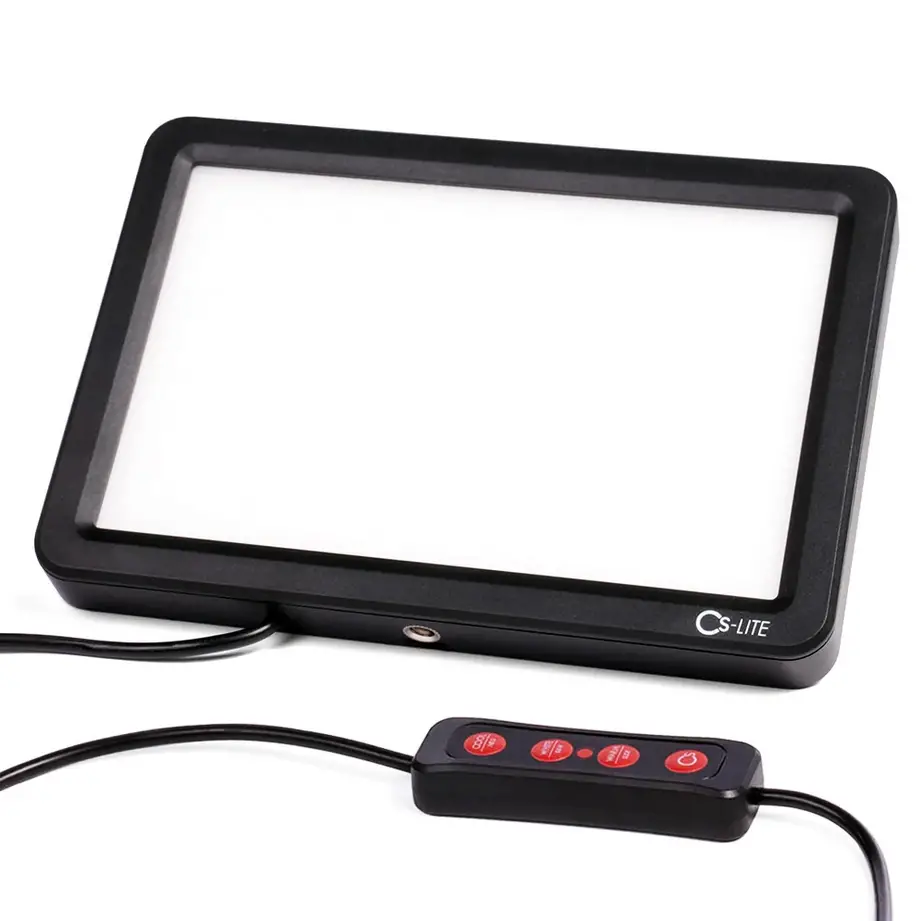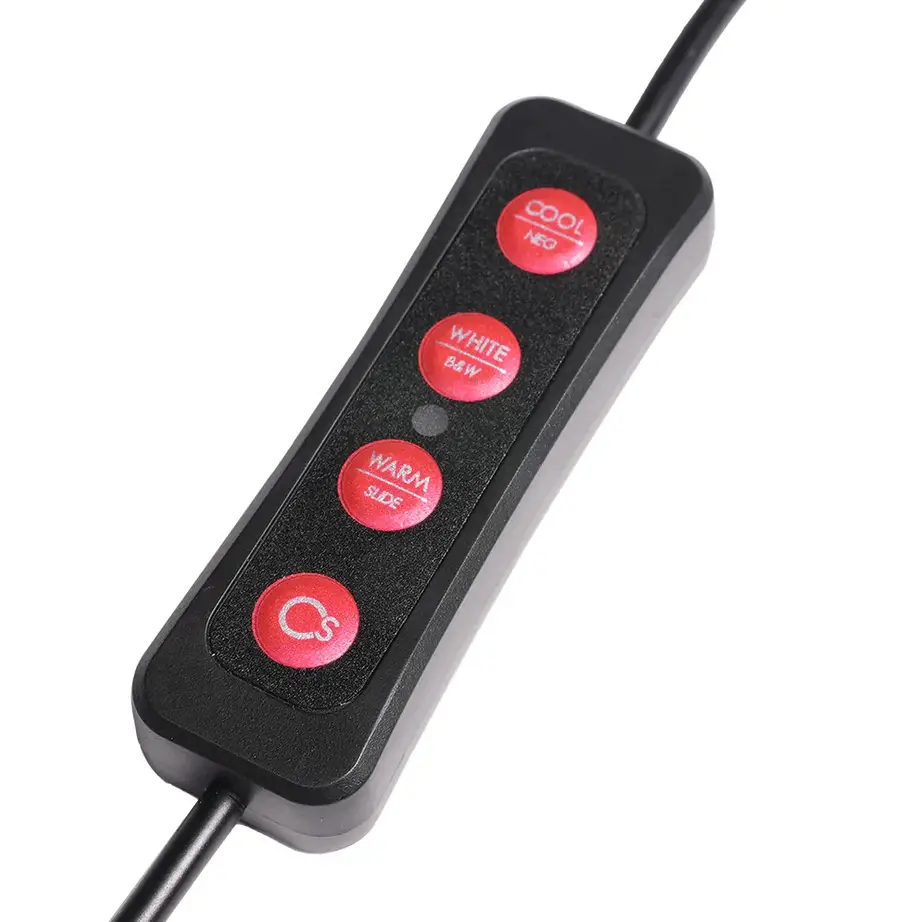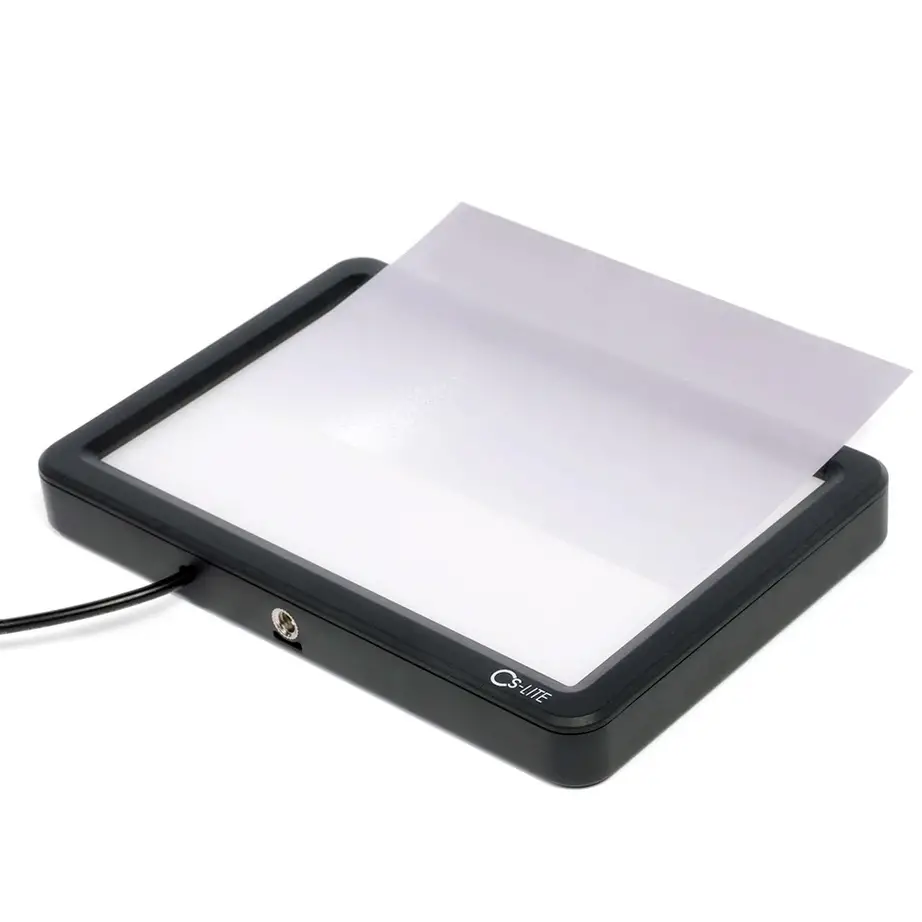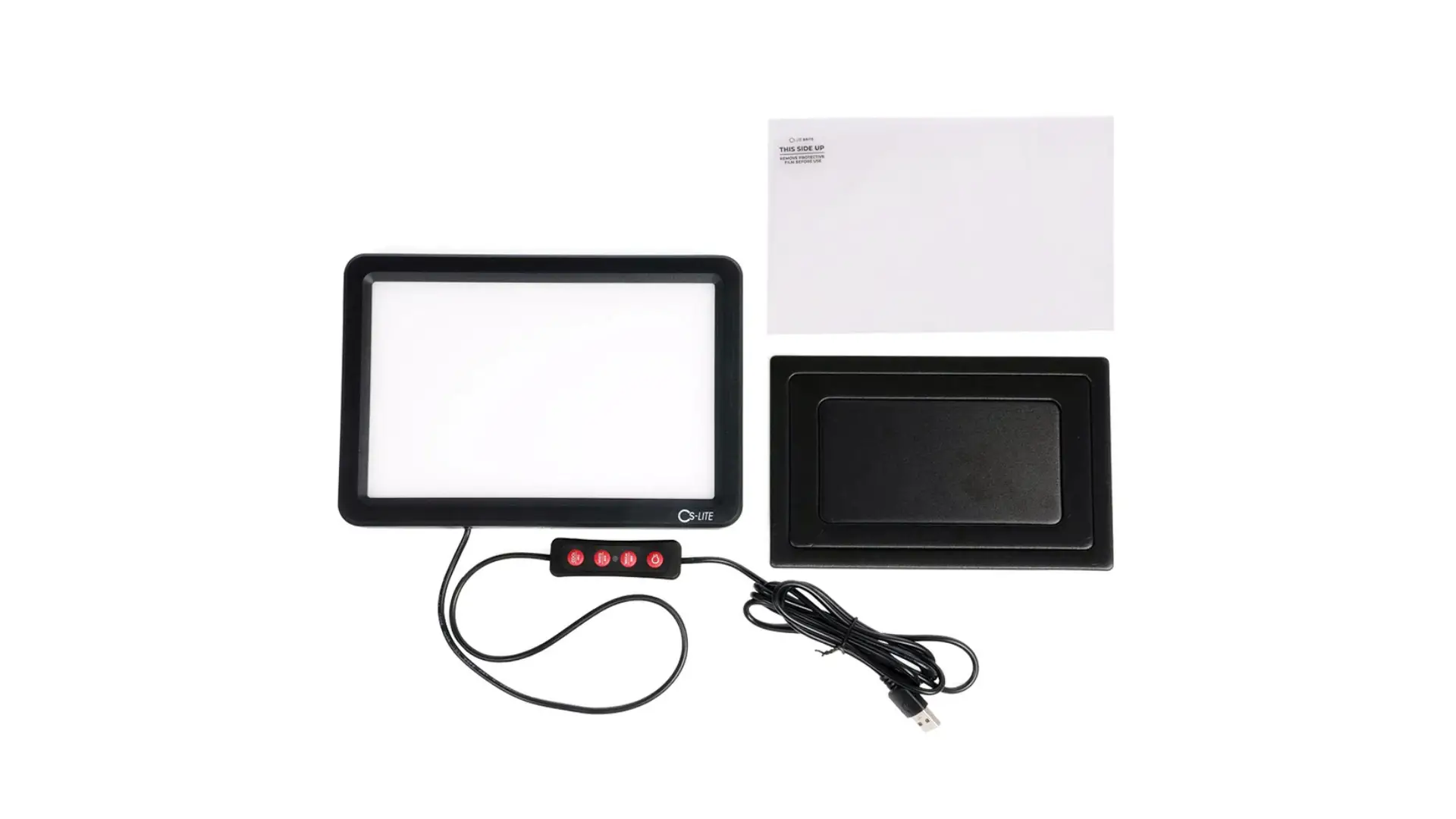Cinestill has released a consumer-grade LED light source specifically designed for digital camera scanning of photographic negatives. Created intentionally for film shooters scanning at home, it is also compatible with existing scanning tools from VALOI.
As seen reported on Kosmo Foto, the CS-LITE is compact (6.5in x 4.4in) and priced at $34.95 (initial sale price of $29.95). The aim is to provide a high-quality light output that allows for improved color management when scanning negatives with a digital camera. The light source has a CRI of 95+, a brightness of EV 15+, and can be adjusted for three different color temperatures for scanning different types of films (black and white, color negative, and color reversal).

CRI is the Color Rendering Index used to measure the effectiveness of LED lights. The measurement scale runs from 0 to 100. A score of 100 means that the colors of items under the light source would appear the same as under natural sunlight. A score of 95+ for Cinestill’s CS-LITE is a very high rating, the same score range used in art galleries and Hollywood production sets where colors need to be as accurate as possible.
EV+15 sounds bright, but what exactly does that mean? Looking at an exposure value scale, an EV of +15 indicates an amount of light equal to bright or hazy sunlight. (Source: Fotodiox). So, the CS-LITE is passing enough light through your negatives as if they were out on a sunny day. Cinestill says this should be enough for even the densest of negatives.
The ability to control color temperature is what Cinestill says sets this product apart from the rest. Each color temperature will have a different impact on each type of film negative. Cinestill recommends the cool light mode for color-negative film with an orange mask to better balance and separate the colors while also decreasing noise. White light mode is intended for black and white film and warm light is matched for standard E6 slide film.

Accompanying the controllable light are two bonus accessories, the CS-LiteMask and the CS-LiteBrite. The LiteMask works with the negative carrier to stop light from spilling out the edges which can decrease indirect light impacts. The mask is made to fit Valoi 360 film carriers but it can also be used with others as well such as ones from Lomography or Negative Supply. (Source: Cinestill)
The LiteBrite works to further increase the brightness to help achieve sharper scans. It is a collimator sheet that is placed directly over the light source which also helps along with the LiteMask to reduce light spill and add to the uniformity of the diffused light passing through the negatives. Collimation is a method of narrowing light to a center point to make it brighter (Source: LG-MRI).

The CS-LITE operates by plugging into a constant power source and does not involve batteries.
To find more information about the CS-LITE, head over to Cinestill’s product webpage here.
Share this post:









Comments
Michael Greene on NEWS: The Cinestill CS-LITE – A Compact Scanning Light Source with Temperature Control
Comment posted: 05/12/2022
It's affordable and works really great.
Comment posted: 05/12/2022
Comment posted: 05/12/2022
Wim van Heugten on NEWS: The Cinestill CS-LITE – A Compact Scanning Light Source with Temperature Control
Comment posted: 05/12/2022
Jacob on NEWS: The Cinestill CS-LITE – A Compact Scanning Light Source with Temperature Control
Comment posted: 06/12/2022
Comment posted: 06/12/2022
Huss on NEWS: The Cinestill CS-LITE – A Compact Scanning Light Source with Temperature Control
Comment posted: 07/12/2022
Also, the three different light temps are, well, arbitrary. Cool, neutral and warm. There are too many other variables in the picture taking process for that to matter. What film stock did you use? Even if you use colour negative film, some are warmer than others. Some are more saturated etc.
What time of day did you shoot? Was it early in the morning, late in the day? The natural light temp will be different. Did you use any filters? etc
It's a gimmick. Just scan in RAW/DNG, and adjust your colour white balance on the final result.
Comment posted: 07/12/2022
Comment posted: 07/12/2022